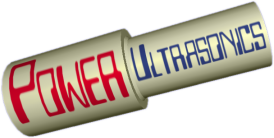Joint design for ultrasonic plastic welding depends on the specific application. These are some common examples. Note that staking and reforming techniques are not included here - for these see the other methods of ultrasonic plastics joining.
Weld concentrator
In this joint design the mating surfaces make initial contact only along a thin line, ensuring that the ultrasonic energy is concentrated into a small area. As welding proceeds this material softens and flows to form the weld, allowing the rest of the contact surfaces to come together forming a natural stop. This technique is good for continuous hermetic seals. "Flash traps" are often used to contain the excess material from the weld, so that a neat external appearance is maintained.
Shear joint
Shear joints are often used for joining round components, although this is not essential to the process. One part fits into the other with a significant interference so that initial contact is only on the interfering surfaces. Again, this concentrates the ultrasonic energy at the location to be welded. During the welding process the material of both surfaces softens and flows, allowing the components to come together. Often a clearance is used at the entry to the interference, allowing easy initial alignment - this region may also be used as a flash trap to contain molten material ejected from the joint.
Stud welding is a variation on this technique where several small cylinders (studs) on one component are welded into matching holes in the other.
Spot welding
In contrast to the methods above, spot welding generally needs no special shape or form on the components. Instead a small sonotrode with a special tip profile clamps though one component to the other. For this to work both components must be relatively thin - the upper one to pass vibrations through, the lower to permit rigid support by the weld fixture. Spot welding sonotrodes may feature special designs to trap and shape the molten plastic ejected from the weld, but in comparison to other methods the appearance of a spot-welded joint is usually inferior.
